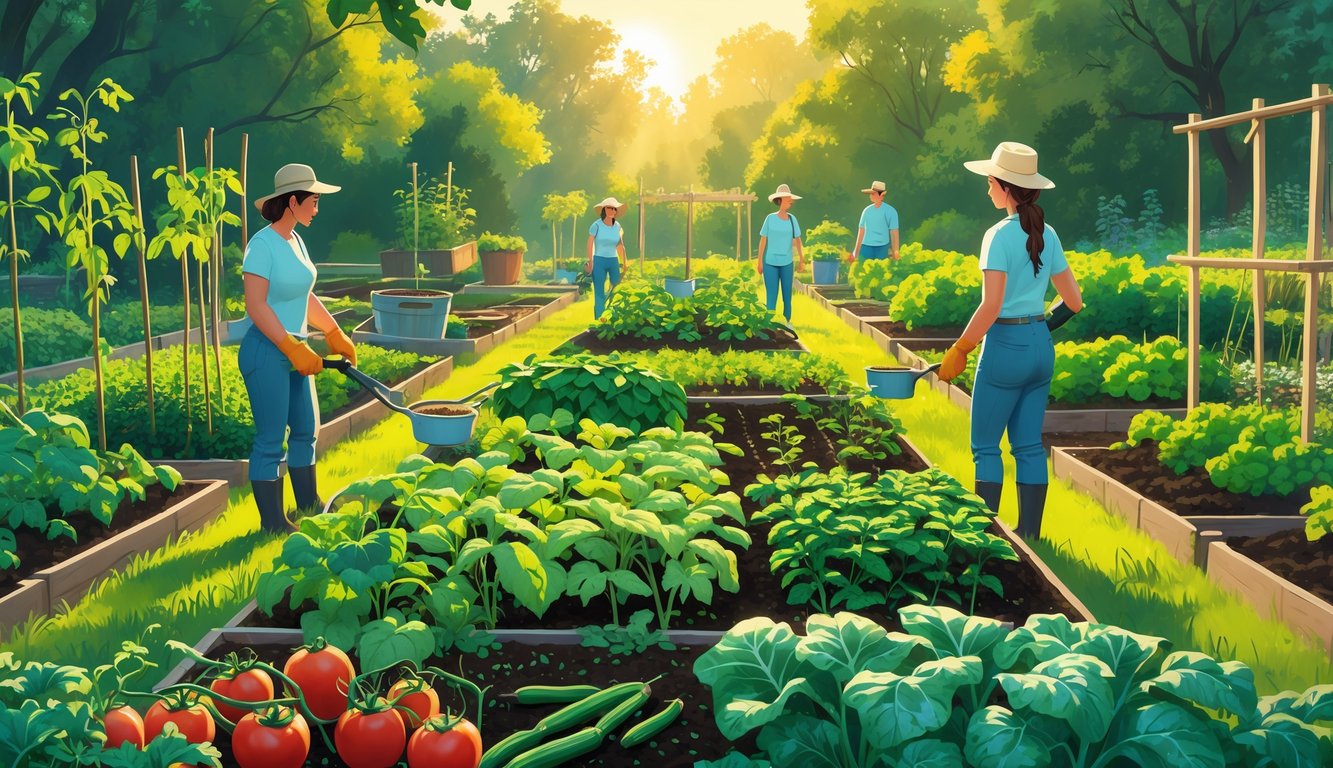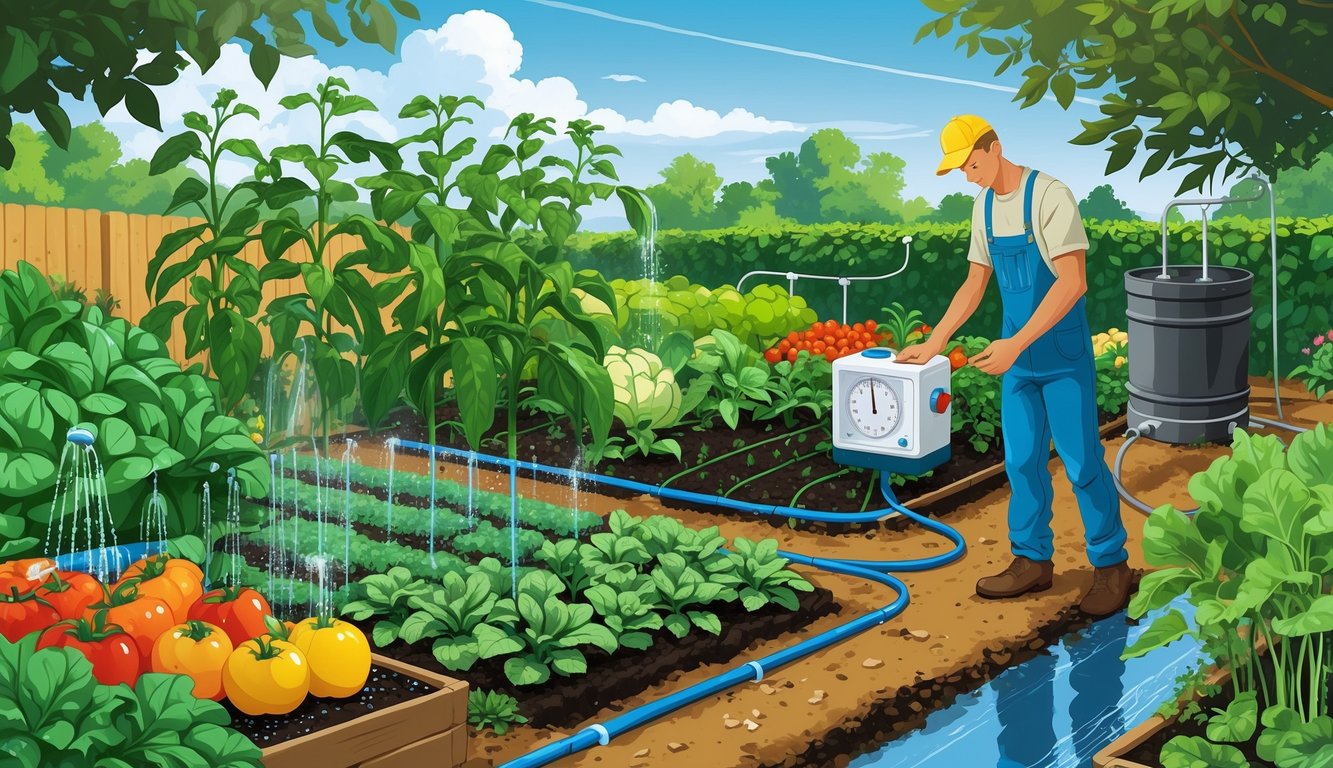
Effective Mulching Strategies
I’m permanently covered in shredded newspaper and takeout boxes, but wow, mulch actually saves time. And my back. Mulch type? I don’t care, as long as it doesn’t blow away or get dragged off by the neighbor’s cat. Skip it, and you’ll regret it—more weeds than carrots, every time.
Using Organic Mulch for Soil Protection
Bark chips gave me splinters, but my tomatoes loved them. Straw is fine, but only if you’re not in slug territory. Gardeners say organic mulch is the way to go. Leaves, grass, wood chips, even cocoa hulls (if your dog isn’t a chocolate fiend) all work. They keep water in and roots happy.
My old professor used to roll his eyes at anything less than 3 inches. Less than that and you’re wasting your time. Too much, and you’ll smother your plants. Local wood chips are better than the bagged stuff and actually smell like a forest. Rubber mulch? That’s just sad. Composted mulch is fine, but only after it’s broken down—otherwise, you’re feeding the weeds.
Suppressing Weeds with Cardboard Layers
If weeds could talk, they’d curse cardboard. I rip the tape off Amazon boxes, slap them down on damp soil, and cover with straw or compost. It looks messy for a week, but then it just works.
Earthworms go nuts for cardboard, and their tunnels break up the soil. If it dissolves in the rain, I just add another box. Mushrooms sometimes show up—neighbors think it’s weird, but it means the soil’s alive. Last spring, buried cardboard actually saved my perennials from a late frost. Garden forums are full of people bragging about cardboard, and honestly, I get it.
Fuss-Free Composting for Maximum Yield
Compost piles up even if you ignore it. That patch by my fence is basically magic compared to every “turn it weekly!” system I’ve tried. Rich, crumbly stuff just happens, and my laziest habits gave me better yields than last year—by accident, honestly.
Quick Composting Tips
Effort? Ha. I just chuck carrot peels, eggshells, and whatever’s flopping in the fridge straight into a weird, vaguely composty corner under some shrubs. Haven’t layered anything in years. Internet says “layer browns and greens,” but who’s got time for that? Commercial bins—tried those, hated them. Unless it turns itself or magically empties, it’s a no from me.
Here’s the kicker: my lazy, cold compost pile somehow coughs up enough crumbly stuff to make the garden explode every spring. Michigan State apparently did some real science and found that even half-hearted composting piles add organic matter, nitrogen, and all that good humus, and it beats the pants off anything you buy in a bag. I mean, microbes do the work if I just leave them alone. If you’re chasing record harvests, honestly, these lumpy heaps do more than any gadget ever did. Squirrels yank out my citrus peels all winter, but the soil? Couldn’t care less. Plants love it.
Integrating Compost into Your Beds
I used to stress about dumping unfinished compost between the tomatoes—wasn’t it supposed to steal nitrogen or something? Last year, I said screw it and dumped a wheelbarrow of chunky, half-rotted stuff right on the beds before a thunderstorm, then tossed on a messy blanket of leaves and grass clippings (pretty sure there were weeds in there). The cucumbers went nuts. Like, mutant big. Turns out, MSU’s “smart gardening” sheets say direct application—even unfinished—actually speeds up soil improvement and doesn’t flush nutrients away.
People obsess over “finished” compost, but plants just want something organic. I slap on a couple inches in spring and again after harvest, never sift, never measure. Beds get darker, worms show up, watering gets easier. Sometimes it’s ugly, sometimes lumpy, but the yields? Way better since I stopped fussing and let the microbes (and maybe the chickens next door) handle it. If you want perfect steps, look elsewhere—this is just what’s working, and honestly, it’s easier than anything I used to bother with.
Smart Watering Techniques

Every garden group, every single time, someone’s yelling about drip irrigation and someone else is all-in on mulch. Timers? Controversial. Soggy shoes? Universal. But ignore the watering stuff and, yeah, your harvest tanks. It’s not just me—there are actual numbers on this.
Benefits of Drip Irrigation
Rain’s a joke lately. My neighbor’s hydrangeas practically gave up during last year’s drought, while my tomatoes—thanks to drip—just kept cranking out fruit. Not even exaggerating. If you want the nitty gritty, here’s a link to low-water garden watering hacks. Lugging hoses is supposed to build character, right? I’d rather not. Drip lines put water right at the roots, slow and steady, no drama.
USDA says drip uses up to 60% less water than sprinklers. Plus, leaf diseases basically disappear. I slapped together a basic system—cheap tubing, nothing “smart”—and it hasn’t leaked in two years. Plants are happier, I’m less sweaty, and the only real issue is ants setting up camp under the lines. No one mentions that.
Timers? I stick with analog. The smart-home folks can keep their apps. I just want fast growth, fat fruit, and less arguing with the weather forecast.
Conserving Water with Mulch and Soil Health
Mulch. Everyone’s got an opinion—pine bark, leaves, straw, cardboard (somebody tried old sweaters, which, no, just no). But a thick layer—three inches, maybe?—actually keeps roots cool and cuts water loss. Science says so, but my knees and wallet are bigger fans.
Compost and untreated wood chip mulch mixed into the soil? Total moisture magnets, plus worms love it. Except that time I used dyed bark and the whole yard smelled like chemicals for a month. Consistent moisture means fewer bitter veggies, fewer splits, and less weird flavor. Ask anyone who’s bitten into a dry tomato.
But, mulch can’t fix everything. If your soil’s compacted or rocky, you’re still in for a struggle. Thick mulch means less watering, fewer weeds, and less time standing around with a hose. More time to actually enjoy the garden, maybe? Sometimes I end up growing accidental oak trees from acorns under the mulch. Nobody ever warns you about that.